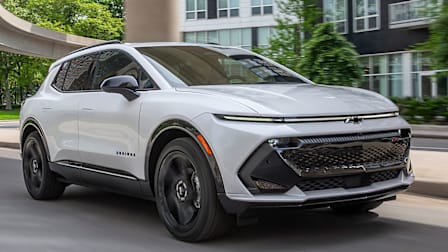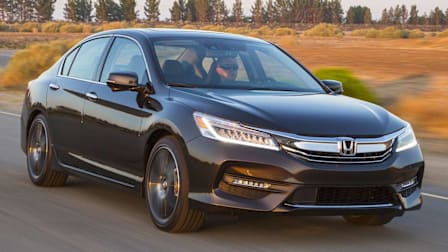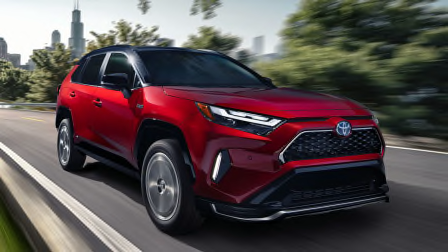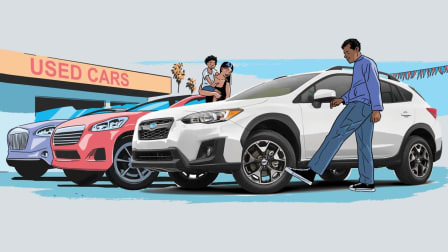Secrets to Electric Car Charging Revealed
Thinking about buying an EV but afraid you'll be stranded far from a charger? CR's experts have the answers.
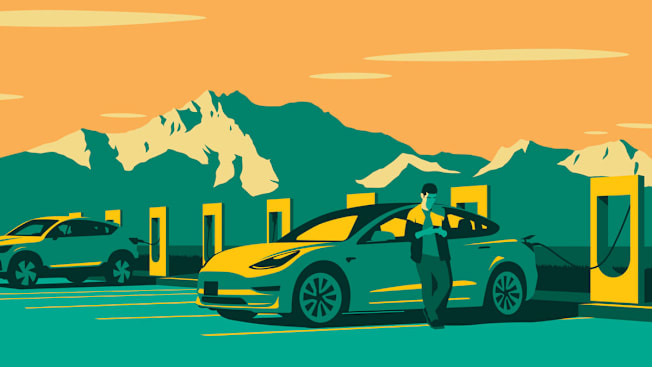
Compared with gas-powered cars, electric vehicles offer lightning-fast acceleration, simpler maintenance, lower ownership costs, and no tailpipe emissions.
But concerns about keeping EVs charged—such as where and when to plug in—keep many potential car buyers from making the switch from gas to electric, according to CR’s nationally representative surveys.
(See the findings from the largest-ever nationally representative survey from Consumer Reports (PDF)).
Powering Up at Home
It’s possible to charge an EV from a conventional 120-volt outlet, but that will add only about 3 miles of range per hour, which is far too slow for most people. Unless you don’t drive very often or very far, or you live near a reliably available public fast charger, CR’s experts recommend installing a Level 2 home charger. These connect to a 240-volt outlet (like the one for a clothes dryer) and typically add around 25 miles of range per hour.
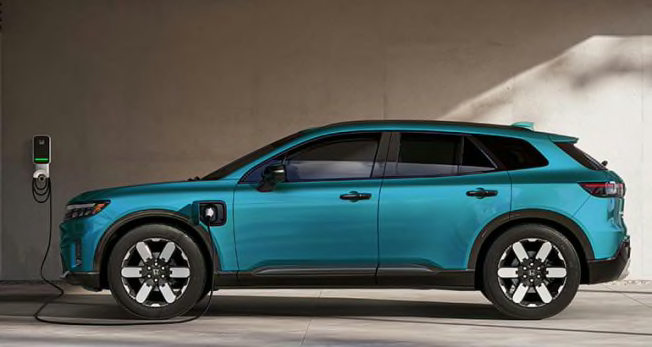
Photo: Honda Photo: Honda
When You're on the Road
Away from home, you’ll need to rely on public chargers. Many hotels, restaurants, and shopping centers offer public Level 2 chargers, but they’re usually no faster than a home charger and are most practical for adding a few miles while you’re getting a meal or for refilling during overnight stops.
If you don’t have time to kill, you’ll want to look for publicly accessible DC fast chargers, otherwise known as DCFC or Level 3 chargers. Exactly how fast they’ll get you on your way again depends on a number of factors, including the model of your car, the outside temperature, and the size of the battery. But most public DC fast chargers are capable of up to 150 kilowatts of power, which typically add about 7 miles of range per minute and a full charge in under an hour.
Some DC fast chargers deliver up to 350 kW of power—but only if the car is designed to accept that level of fast charging. For example, the Kia EV6 can add almost 13 miles of range per minute at a 350 kW charger, while the Toyota bZ4X can add only 5 miles of range per minute whether it’s plugged into a 150 kW charger or a 350 kW charger.
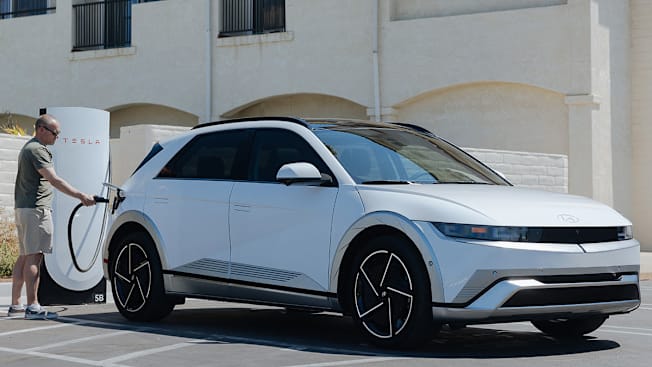
Photo: Hyundai Photo: Hyundai
DC fast chargers aren’t as ubiquitous as gas stations or as quick to use as a gas pump, but they’re becoming more common off major highways and at rest stops. Apps such as PlugShare and A Better Routeplanner will help you find them and provide charging speeds and costs. Many in-car navigation systems will do the same. To minimize the hassle, download the apps for various charging networks—Applegreen Electric, ChargePoint, Electrify America, EVgo, Flo, and Tesla—and create accounts with payment information before you hit the road. Wherever you plug in, you’ll have to make sure the charger is compatible with your car. (See our guide to EV charger connectors, below.)
In our experience, it’s rare for an EV to charge at the maximum rate claimed by the manufacturer. No matter how fast the car charges, it will take significantly longer than filling a gas tank, not counting the time you may need to wait your turn in line. On long drives or road trips, you may want to factor in extra time in case a charger isn’t working, it’s occupied, or the EV takes longer to charge than you expected.
Charging differs from pumping gas in a few other ways. For instance, an EV charging cord is heavier than the hoses at gas pumps, and you’ll probably have to plug it in yourself. (We’ve rarely seen a staffed, full-service EV charging station.) Because charging ports are in different places on different models, you may have to park awkwardly for the cord to reach the car, especially if you’re towing or you’re plugging in a non-Tesla at a Supercharger. And if you leave your car parked after charging it, you might automatically incur an idle fee of up to $1 a minute for blocking the space.
See a complete list of the fastest- and slowest-charging EVs (both DC fast and Level 2).
EVs With the Longest and Shortest Ranges
To give you a realistic idea of how far a model can go on a single charge, we put every EV in our ratings through extensive highway-speed range testing. You can see the results of those evaluations for the longest- and shortest-range vehicles (and the CR Recommended models) in the chart below. We’ve also noted the DC fast charging speed for each vehicle because faster charging means less waiting when you’re on the road.
The average miles of range gained per minute in public DC-fast charging places displayed here is a function of each specific EV’s maximum acceptance rate in terms of kW and its energy consumption in terms of miles/kWh.

Charging speeds shown are peak estimates at DC fast chargers and were provided by manufacturers. “E” means EPA-estimated range. Highway ranges are for vehicle trim levels tested by CR.
Charging Champs
These three EVs have a winning combination of long highway ranges and impressive charging speeds, so you can drive farther and stop less frequently.
Guide to EV Charger Connections
For years, the EV charging landscape was divided in two: Tesla and everyone else. Tesla cars used a proprietary plug, now called NACS (North American Charging System), that enabled them to take advantage of Tesla’s robust nationwide network of Superchargers as well as non-Tesla chargers using an adapter. Non-Tesla EVs were equipped with different styles of plugs for Level 2 and Level 3 charging that worked only with non-Tesla home and public chargers, such as ChargePoint, Electrify America, and EVgo. That’s now changing as nearly every automaker moves to the NACS standard.
Most EVs for sale today will soon be able to charge at Tesla Superchargers using a NACS-to-CCS (Combined Charging System) adapter. Many of them, including those from Ford, GM, Mercedes-Benz, and Rivian, already can. (Third-party adapters are available, but some manufacturers require you to use a factory-authorized model or you risk voiding your vehicle’s warranty.) The 2025 Hyundai Ioniq 5 doesn’t need an adapter because it has a built-in NACS port, and other new EVs will follow suit.
The Nissan Leaf is a charging outlier. It has an outdated port called CHAdeMO that’s not compatible with most public chargers and there isn’t an authorized adapter.
See which electric vehicles can charge at a Tesla Supercharger.

J1772

CCS

CHAdeMO

NACS
How to Choose a Home Charger
With so many home chargers on the market, it can be hard to know which one to buy. These three are well-priced and have been installed by many CR employees at their own homes. Each one offers features that we’ve learned are useful from our years of experience charging EVs at our Auto Test Center. These include long cords and the ability to be hardwired to a higher-amperage circuit for quicker charging. (An electrician can tell you if your home’s electrical system can handle this.)
Some are “smart” chargers that allow you to schedule and monitor your car’s charging status through a phone app. Smart chargers may qualify for rebates from your electric company and could allow for less expensive off-peak charging in some areas.
No matter which charger you purchase, look for a UL or ETL certification. “If something goes wrong with a charger,” says CR’s Shenhar, “it could damage your vehicle or even cause a fire.”
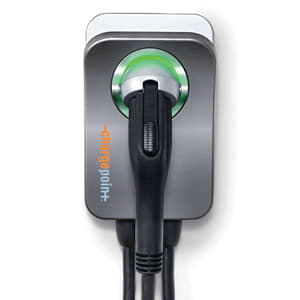
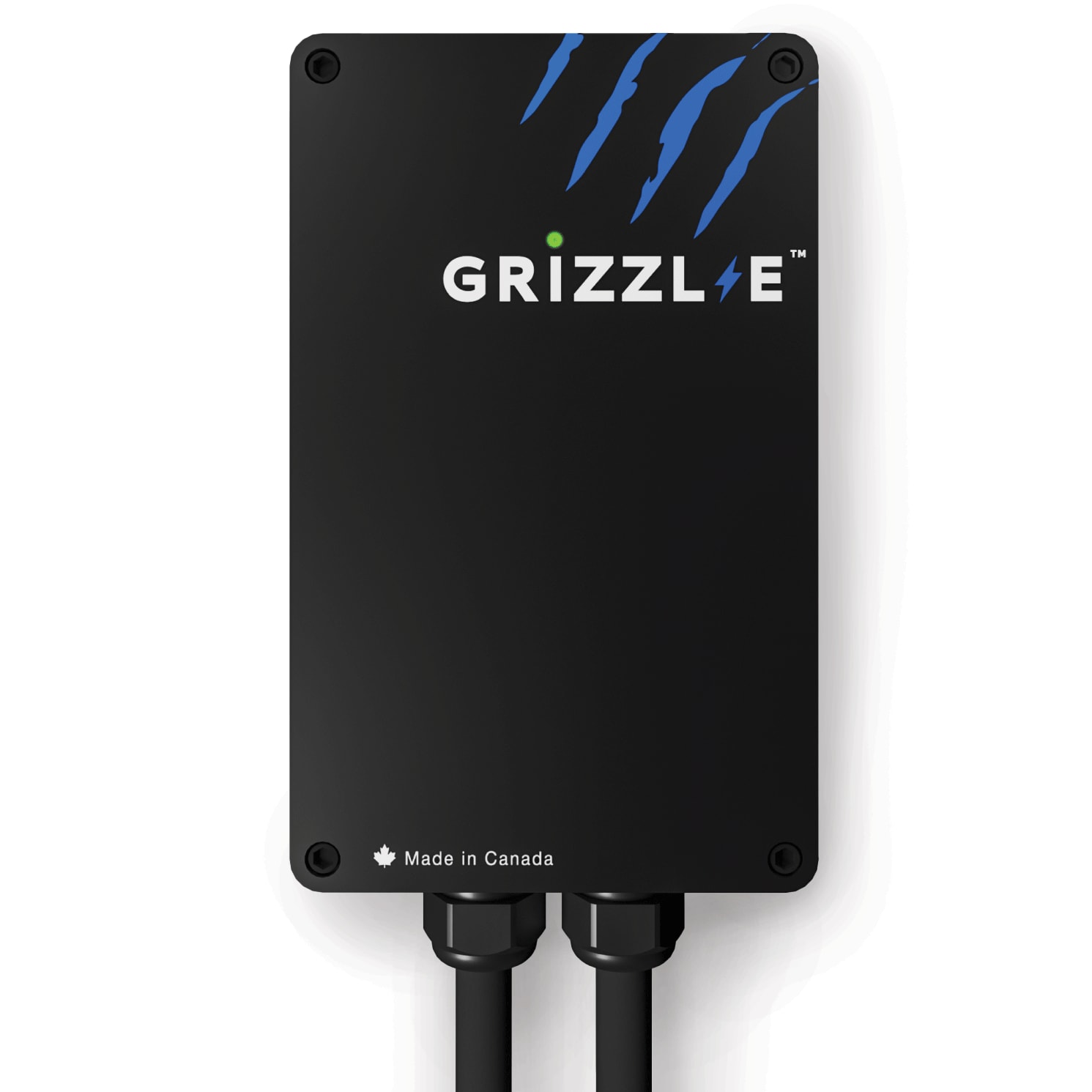
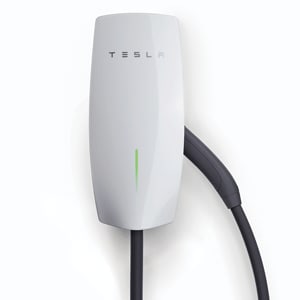
Tips to End Charging Anxiety
It’s easy to obsess over your EV’s remaining battery range when you’re out and about. These tips can help you charge faster and go farther between charges.
Precondition Your Battery
Many EVs allow drivers to “precondition” the battery while driving by heating it up for quicker charging. That’s especially important in cold weather, when batteries charge much more slowly. You can usually activate this feature automatically by entering a DC fast charger into the vehicle’s navigation system or pressing a button to manually start the process. (Learn more in "How Much Do Cold Temperatures Affect an Electric Vehicle’s Driving Range?"
Charge Only to 80 Percent
EV batteries charge fastest and most efficiently between almost empty and about 80 percent full. Adding that final 20 percent can take a lot longer than the rest of the charge. So don’t worry about getting a full charge when you’re on the road. You’ll probably get there faster if you make more stops to charge up to 80 percent than if you make fewer stops for full charges.
Don’t Let Climate Controls Drain the Battery
Running the heat or air conditioning saps the battery and shortens range. You can stay comfortable and save battery power by scheduling your car to preheat or precool while it’s still charging. (Most EVs have this feature.)
Take the More Efficient Route
Most EVs with built-in navigation systems will give drivers the option to plan a route that maximizes time spent on the road and minimizes time spent at charging stops. Some will also offer an “energy saving” route that takes a few minutes longer but saves range by avoiding hills or highways.
Shopping for an EV?
See our electric vehicle buying guide and ratings.
Editor’s Note: This article also appeared in the April 2025 issue of Consumer Reports magazine.

















